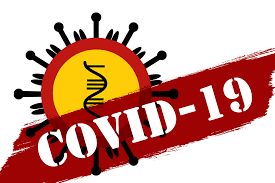 Typical indicators for an appendicitis are:
Typical indicators for an appendicitis are:
• Pain extending from umbilicus into the RIF (McBurney’s point)
• Loss of appetite +/- Fever
• +/- Nausea and vomiting
• Rebound tenderness
• Increased white cell count (WCC)
Atypical indicators:
• Pain localised to RIF
• Diarrhoea (Prolonged)
• Frequency of urination
Other signs can include:
• Rovsing’s Sign – Deep pressure in the LIF will cause pain in the RIF
• Psoas Sign – Inflamed appendix can put pressure on the psoas muscle. The patient flexes right hip for pain
relief.
• Obturator Sign – inflamed appendix which comes into contact with obturator internus can cause spasm when
flexing and internally rotating the hip.
(https://www.mayoclinic.org/diseases-conditions/appendicitis/symptoms-causes/syc-20369543)
Diagnosis can be made through:
• Patient History
• Clinical Examination
• WCC
• Ultrasound and +/- CT scan/MRI
HOW DO WE DIAGNOSE AN APPENDICITIS ON ULTRASOUND? KEY ELEMENTS.
Identify the appendix (Blind ended tube arising from the caecum)
Be aware that the appendix can sit in various positions. Using a clock face:
 1 O’clock – Pre-ileal (Anterior to terminal ileum)
1 O’clock – Pre-ileal (Anterior to terminal ileum)
2 O’clock – Post-ileal (Posterior to terminal ileum)
5 O’clock – Pelvic (Over pelvic brim)
6 O’clock – Sub-caecal (Inferior to the caecum)
11 O’clock – Retro-caecal (Behind the caecum). Most common position.
https://teachmeanatomy.info/abdomen/gitract/appendix
Understand the layers that make up the bowel wall!

Sourced from https://commons.wikimedia.org/wiki/File:Mucosa.jpg
Use a HIGH frequency linear probe, with an empty patient bladder.
Start scanning high in the abdomen over the ascending colon, and put increasing probe pressure (Graded compression) on when scanning inferiorly. This moves air from the bowel and improves visualisation.
- Identify the caecum (characterised by large calibre, typically filled with gas/faecal material (hyperechoic), haustral folds – lobulated appearance, and very slow peristatic movement).
- Identify the iliocaecal valve (Valve between small and large intestine)/terminal ileum – Small bowel, narrow calibre, valvulae conniventes (smooth wall), visible peristalsis, fluid can be seen moving through.
- Appendix
DIRECT SIGNS SEEN ON ULTRASOUND
• Non compressible blind ended tube (Appendix)
• Measuring > 7 mm in diameter
• Wall thickness > 3mm
• Appendicolith
• Target sign (Axial Position)
• Colour doppler – Hyperaemia (Ensure scale setting accordingly).
• Potentially avascular if necrotic.
INDIRECT SIGNS SEEN ON ULTRASOUND
• Free fluid (Around appendix and in POD)
• Hyperechoic mesenteric fat
• Enlarged lymph nodes



References:
• Carroll D & Jacob K et al (2019) “Appendicitis” sourced May 2019
https://radiopaedia.org/articles/appendicitis
• Mostbeck G et al (2016) “How to diagnose an acute appendicitis: Ultrasound first” sourced May 2019
https://www.ncbi.nlm.nih.gov/pmc/articles/PMC4805616/
• Löfvenberg F and Salo M (2016) “Ultrasound for Appendicitis: Performance and Integration with Clinical
Parameters” sourced May 2019 https://www.ncbi.nlm.nih.gov/pmc/articles/PMC5156797/
• Puylaert JB (1986) Acute Appendicitis: US evaluation using graded compression sourced May 2019
https://pubs.rsna.org/doi/10.1148/radiology.158.2.2934762
• https://www.mayoclinic.org/diseases-conditions/appendicitis/symptoms-causes/syc-20369543)
• https://teachmeanatomy.info/abdomen/gi-tract/appendix/
• https://commons.wikimedia.org/wiki/File:Mucosa.jpg








